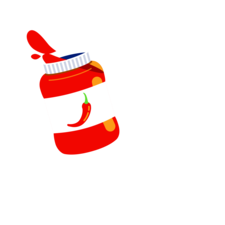Steamをインストール
ログイン
|
言語
简体中文(簡体字中国語)
繁體中文(繁体字中国語)
한국어 (韓国語)
ไทย (タイ語)
български (ブルガリア語)
Čeština(チェコ語)
Dansk (デンマーク語)
Deutsch (ドイツ語)
English (英語)
Español - España (スペイン語 - スペイン)
Español - Latinoamérica (スペイン語 - ラテンアメリカ)
Ελληνικά (ギリシャ語)
Français (フランス語)
Italiano (イタリア語)
Bahasa Indonesia(インドネシア語)
Magyar(ハンガリー語)
Nederlands (オランダ語)
Norsk (ノルウェー語)
Polski (ポーランド語)
Português(ポルトガル語-ポルトガル)
Português - Brasil (ポルトガル語 - ブラジル)
Română(ルーマニア語)
Русский (ロシア語)
Suomi (フィンランド語)
Svenska (スウェーデン語)
Türkçe (トルコ語)
Tiếng Việt (ベトナム語)
Українська (ウクライナ語)
翻訳の問題を報告













































⣿⣿⣿⣿⠀⠀⠸⠿⣿⣿⣿⣿⣿⣿⣿⣿⣿⣿
⣿⣿⣿⠃⠀⣠⣾⣿⣿⣿⣿⣿⣿⣿⣿⣿⣿⣿
⣿⡿⠃⠀⢰⣿⣿⣿⣿⣿⣿⣿⣿⣿⣿⣿⣿⣿
⣿⠃⠀⠀⣾⣿⣿⣿⣿⣿⣦⠀⠈⠻⣿⣿⣿⣿
⣿⠀⠀⠀⣿⣿⣿⠟⠉⠉⠉⢃⣤⠀⠈⢿⣿⣿
⣿⠀⠀⠀⢸⣿⡟⠀⠀⠀⠀⢹⣿⣧⠀⠀⠙⣿
⣿⡆⠀⠀⠈⠻⡅⠀⠀⠀⠀⣸⣿⠿⠇⠀⠀⢸
⣿⣿⠀⠀⠀⠀⠀⠀⠀⠀⠔⠛⠁⠀⠀⠀⣠⣿
⣿⣿⠀⠀⠀⠀⠀⠀⠀⠀⠀⠀⠀⠀⢀⣴⣿⣿
⣿⣿⠃⠀⠀⠀⠀⠀⠀⠀⠀⠀⣠⣾⣿⣿⣿⣿
⣿⣿⡇⠀⠀⠀⠀⠀⠀⠀⠀⣠⣿⣿⣿⣿⣿⣿
⣿⣿⡇⠀⠀⠀⠀⠀⠀⠀⢰⣿⣿⣿⣿⣿⣿⣿
⣿⣿⣿⠀⠀⠀⠀⠀⠀⠀⢸⣿⣿⣿⣿⣿⣿⣿
⣿⣿⣿⠀⠀⠀⠀⠀⠀⠀⠘⣿⣿⣿⣿⣿⣿⣿
⣿⣿⠁⠀⠀⠀⠀⠀⠀⠀⠀⢹⣿⣿⣿⣿⣿⣿
⣿⠟⠀⠀⠀⠀⠀⠀⠀⠀⠀⢠⣿⣿⣿⣿⣿⣿
⡟⠁⠀⠀⠀⠀⠀⠀⠀⠀⠀⢸⣿⣿⣿⣿⣿⣿
A ball bearing is a type of rolling-element bearing that uses balls to maintain the separation between the bearing races.
The purpose of a ball bearing is to reduce rotational friction and support radial and axial loads. It achieves this by using at least two races to contain the balls and transmit the loads through the balls. In most applications, one race is stationary and the other is attached to the rotating assembly (e.g., a hub or shaft). As one of the bearing races rotates it causes the balls to rotate as well. Because the balls are rolling, they have a much lower coefficient of friction than if two flat surfaces were sliding against each other.
Ball bearings tend to have lower load capacity for their size than other kinds of rolling-element bearings due to the smaller contact area between the balls and races. However, they can tolerate some misalignment of the inner and outer races.
⠄⠄⠄⠄⠄⠄⠄⠄⣀⡀⠄⣴⡆⠄⢀⡀⠄⠄⠄⠄⠄⠄⠄⠄
⠄⠄⠄⠄⠄⢠⣤⠄⠙⢿⣆⣿⣇⣴⡿⠋⣼⡇⠄⢀⡀⠄⠄⠄
⠄⠄⠄⢠⣄⡈⢿⣆⠄⠄⠹⣿⡿⠋⠄⢠⣿⣥⣶⠿⠃⠄⠄⠄
⠄⠄⠄⠈⠙⢻⣿⣿⣆⡀⠄⣿⡇⢀⣤⣾⢿⣿⣶⣤⣤⠄⠄⠄
⠄⠄⠄⠶⠿⠟⠛⠉⠙⠻⣿⣿⣿⣿⠋⠄⠄⠄⠄⠄⠁⠄⠄⠄
⠄⠄⠄⣴⣦⣤⣤⣤⣤⣾⠿⢿⡿⠿⢷⣦⣤⣶⡾⠿⠛⠄⠄⠄
⠄⠄⠄⠄⢀⣬⣿⣿⡟⠄⠄⢸⡇⠄⠄⠈⢿⡿⠿⣶⣤⠄⠄⠄
⠄⠄⠄⠄⠛⠉⢠⣿⠁⠄⣴⣿⣿⣦⠄⠄⠘⣿⡄⠄⠉⠄⠄⠄
⠄⠄⠄⠄⠄⠄⠘⠋⣠⡾⠋⢸⡇⠙⢷⣄⠄⠈⠁⠄⠄⠄⠄⠄
⠄⠄⠄⠄⠄⠄⠄⠄⠄⠄⠄⠸⠇⠄⠄⠄⠄⠄⠄⠄⠄⠄⠄⠄
⠄⠄⠄⠄⠄⠄⠄⠄⠄⠄⠄⠄⠄⠄⠄⠄⠄⠄⠄⠄⠄⠄⠄⠄